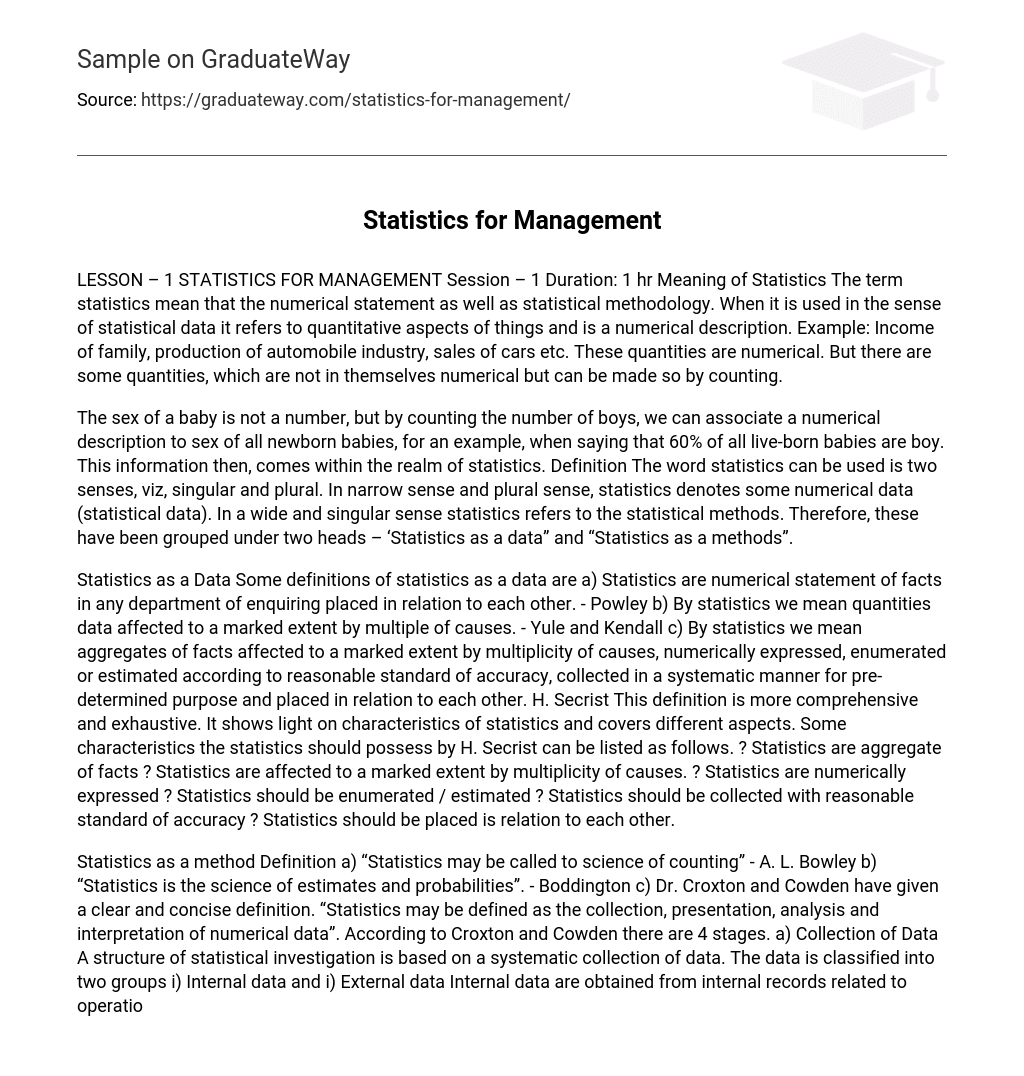The term statistics mean that the numerical statement as well as statistical methodology. When it is used in the sense of statistical data it refers to quantitative aspects of things and is a numerical description. Example: Income of family, production of automobile industry, sales of cars etc. These quantities are numerical. But there are some quantities, which are not in themselves numerical but can be made so by counting.
The sex of a baby is not a number, but by counting the number of boys, we can associate a numerical description to sex of all newborn babies, for an example, when saying that 60% of all live-born babies are boy. This information then, comes within the realm of statistics. Definition The word statistics can be used is two senses, viz, singular and plural. In narrow sense and plural sense, statistics denotes some numerical data (statistical data). In a wide and singular sense statistics refers to the statistical methods. Therefore, these have been grouped under two heads – ‘Statistics as a data” and “Statistics as a methods”.
In state affairs, statistics is useful in following ways
- To collect the information and study the economic condition of people in the states.
- To asses the resources available in states.
- To help state to take decision on accepting or rejecting its policy based on statistics.
- To provide information and analysis on various factors of state like wealth, crimes, agriculture experts, education etc.
Some important functions of statistics are as follows
- To collect and present facts in a systematic manner.
- Helps in formulation and testing of hypothesis.
- Helps in facilitating the comparison of data.
- Helps in predicting future trends.
- Helps to find the relationship between variable.
- Simplifies the mass of complex data.
- Help to formulate polices.
- Helps Government to take decisions.
Limitations of statistics
- Does not study qualitative phenomenon.
- Does not deal with individual items.
- Statistical results are true only on an average.
- Statistical data should be uniform and homogeneous.
- A statistical result depends on the accuracy of data.
- Statistical conclusions are not universally true.
- Statistical results can be interpreted only if person has sound knowledge of statistics.
Distrust of statistics is due to lack of knowledge and limitations of its uses, but not due to statistical sciences. Distrust of statistics is due to following reasons.
- Figures are manipulated or incomplete.
- Quoting figures without their context.
- Inconsistent definitions.
- Selection of non-representative statistical units.
- Inappropriate comparison
- Wrong inference drawn.
- Errors in data collection.
Statistical investigation is a long and comprehensive process and requires systematic collection of data in large size. The validity and accuracy of the conclusion or results of the study depends upon how well the data were gathered. The quality of data will greatly influence the conclusions of the study and hence importance is to be given to the data collection process. Statistical data may be classified as Primary Data and Secondary Data based on the sources of data collection.
- Primary data are those which are collected for the first time by the investigator / researchers and are thus original in character. Thus, data collected by investigator may be for the specific purpose / study at hand. Primary data are usually in the shape of raw materials to which statistical methods are applied for the purpose of analysis and interpretation.
- Secondary have been already collected for the purpose other than the problem at hand. These data are those which have already been collected by some other persons and which have passed through the statistical analysis at least once. Secondary data are usually in the shape of finished products since they have been already treated statistically in one or the other form. After statistical treatment the primary data lose their original shape and becomes secondary data.





